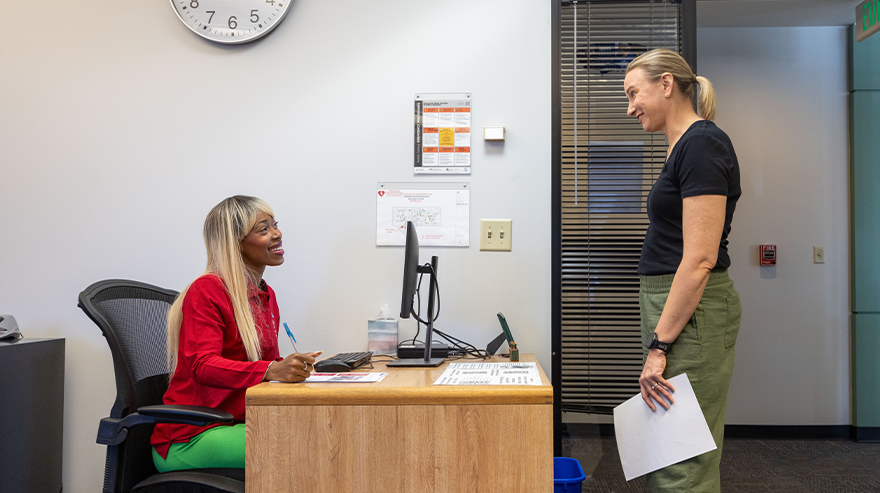When students don’t seem to be doing the assigned reading, attending class regularly or turning in assignments, our impulse as faculty may be to declare them “lazy.” The term “lazy,” though, is often inaccurate and keeps us from asking questions about what is really keeping our students from performing the way we want them to.
True laziness is an unwillingness to do work or exert energy. Students may want to engage with our readings and assignments and may be doing quite a bit of work or exerting vast amounts of energy that are not visible to us.
Take a SIP of this: recognizing student “laziness” for what it really is
One member of the SIP Squad regularly asks their students to write on the board all the reasons they don’t do the reading, attend every class or turn in assignments. Over several years of doing this activity, they have found that an unwillingness to do work or exert energy accounts for a tiny minority of the reasons. Much more prevalent are reasons that have nothing to do with laziness: being pulled between competing priorities, having an unreasonable workload, beliefs such as perfectionism and more. Some of the more common reasons students have shared:
Competing priorities: Students report being called into work, having to look for a new job and caring for dependents as obligations that take priority over schoolwork.
Unreasonable workload: Just as the reduced-workload proposal working its way through the Faculty Senate acknowledges that faculty workload needs to be reduced, students often find the student workload to be unsustainable. They commonly tell of having to read dense material in short periods or produce extensive research without solid research skills or adequate time to digest scholarly research articles. Multiple deadlines at midterm and end of semester can cause work pileups.
Limiting beliefs: Students report that fear of failure or of looking unprepared or stupid can keep them from submitting work. Or they are embarrassed to ask a professor to explain something multiple times.
Health-related obstacles: Students with chronic illness or conditions that require trial and error with medications often miss classes or are unable to meet assignment deadlines. Difficulty getting doctor’s appointments that align with work and school schedules may result in students missing class. Getting an upsetting diagnosis may render a student unable to engage with school. Mental-health troubles, such as struggling with depression or anxiety, can keep students from fully engaging.
Transportation: Students often find simply getting to campus to be a complicated endeavor. Car breakdowns, public transportation that doesn’t stay on schedule and having to coordinate transportation with roommates or other family members can be an invisible burden of emotional labor.
In addition to these categories of obstacles keeping students from completing work or attending class, students find themselves attending or planning memorial events, overwhelmed by the demands of life or dealing with unsupportive family members. (The SIP Squad member who surveys their class is still haunted by the time a student wrote “my dad wouldn’t let me leave the house” on the board.)
This list demonstrates that what we may perceive as laziness is a variety of obstacles. Grouping this disparate collection of reasons under the umbrella term “laziness” can keep us from noticing what we can do. Understanding the obstacles may help faculty members better support their students, adjust their own expectations when indicated; or simply convey empathy.
Faculty members often cannot solve the problems that keep students from engaging. What can be done is to reframe the perceptions around students not doing the assigned work. Shifting the thinking about why students don’t show up or do assigned work can help instructors see the situation from other perspectives. Seeing students as “lazy” may make educators feel dismissive, angry or disrespected. Reframing “laziness” can allow other possibilities to come into view: When the student who has missed many classes does show up, it can be recognized as an accomplishment; instead of dismissing the student who hasn’t done the reading, an instructor can assume a complicated home life and feel some compassion.
Here are three ways you can reframe student “laziness”:
- Assume that students who don’t do the work or miss class have reasons. You don’t have to know the reasons or even value them. Simply acknowledge that there are reasons and that you can’t control them. This may be difficult. Faculty members are often encouraged and feel personally compelled to support students. The suggestion here is not to step away from supporting students but to recognize that sometimes there is simply nothing we can do. We cannot fix the student’s car, their complicated home life or their exploitative work situation.
- Recognize that sometimes a student has made a deliberate decision to not do the work or exert energy. This can be a courageous act of self-care and boundary-setting. It is not a decision made to spite you or show disrespect to you; in fact, the decision has nothing at all to do with you.
- Reflect on whether you are struggling to do all the work and attend meetings. If you are, consider doing less, assigning less and/or grading less.
Still thirsty? Take another SIP of recognizing student “laziness” for what it really is
- Claire Robinson’s TED Talk, “Stop Calling My Generation Lazy”
- “8 Reasons Why You Are Lazy in College” — this blog post addresses eight behaviors students can experiment with to improve their ability to get schoolwork done.
- “Laziness Does Not Exist but Unseen Barriers Do” — this article by a psychology professor unpacks some of the hidden reasons behind what faculty members perceive as laziness.
Visit the Well at http://sites.msudenver.edu/sips/ for more great ideas and resources for Strong Instructional Practices in your higher–education classroom.








